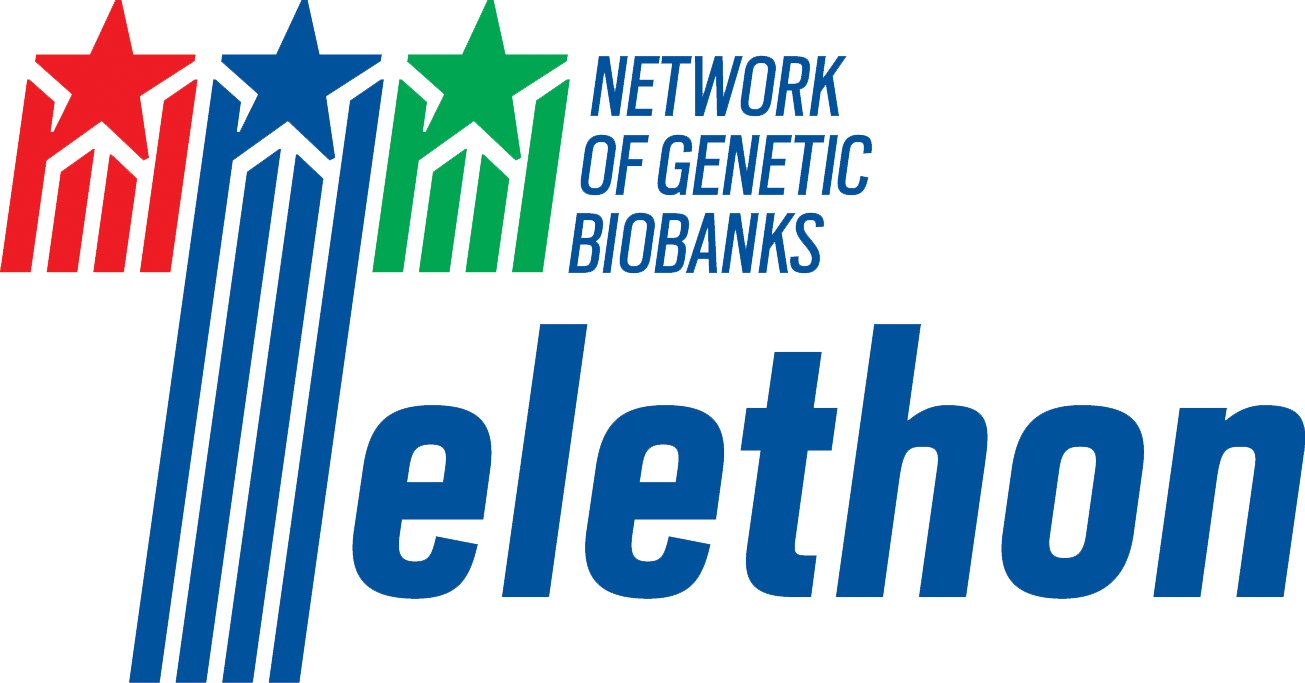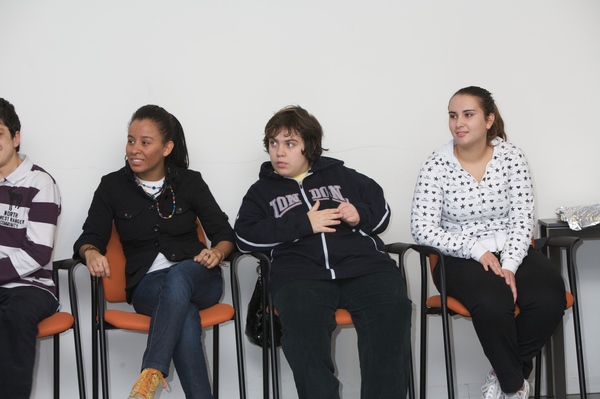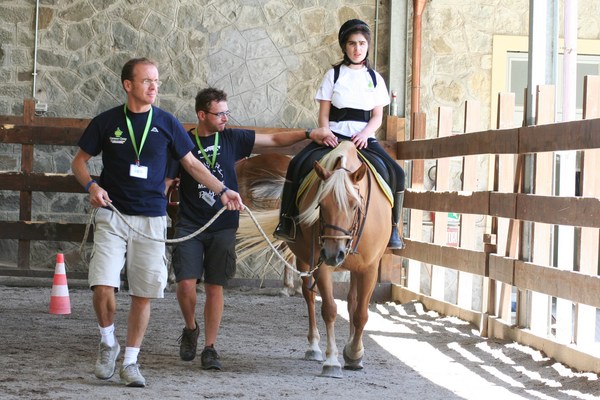
SYNDROMES OF CHROMOSOME 14 DEFECTS
What is Ring chromosome 14 Syndrome?
Ring14 indicates an alteration of chromosome 14, which acquires a ring shape because the two ends, one of the long arm and the other of the short arm, join together. This joining takes place as a result of two breaking events at the end of each arm, which generally involves a partial loss of genetic material of chromosome 14. This chromosomal abnormality can affect every cell or be mosaic with a cell line that has lost a complete chromosome 14 (monosomy 14).
Ring14 chromosome damage is associated with a number of frequent signs and symptoms and results in a disease characterized by both syndromic intellectual disability in addition to multiple phenotypic abnormalities.
The diagnosis of Ring14 is obtained through a simple chromosome analysis.
Other anomalies of the 14th chromosome.
Partial deletions, translocations
Chromosome 14 can also be affected by other structural abnormalities, such as partial interstitial deletions of the long arm, balanced or unbalanced translocations with other chromosomes, in which the shape of the chromosome remains linear and does not circularizes. Signs and symptoms associated with partial linear deletions are partly similar to those associated with Ring14, such as intellectual disabilities, and include multiple phenotypic abnormalities (e.g. microcephaly) plus hypotonia (muscle weakness), frequent respiratory infections and delayed growth and learning.
Also in these cases, the initial diagnosis consists of a simple chromosome analysis. If however the deletion is submicroscopic, it will be detectable only through a molecular-cytogenetic test, the Array-CGH.
UPD(14)
In other cases, chromosome 14 anomalies associated with specific clinical conditions are not structural, but functional. A typical situation is when the two chromosome 14s are complete, but derive from the same parent. This condition is called uniparental disomy for chromosome 14 (UPD(14)), of maternal or paternal origin and occurs when both chromosome 14s come from either the mother or father.
The clinical picture is profoundly different for the two conditions. In UPD(14) of paternal origin, clinical signs are characterized by significant growth delay, peculiar conformation of skull and face, thoracic deformity, anomalies of the abdominal wall and intellectual disabilities; pregnancy is often complicated by polyhydramnios. In UPD(14) of maternal origin, clinical signs are less severe and characterized by hypotonia, feeding disorders in the first years of life, milder intellectual disability, short stature and small hands and feet. Obesity with hyperphagia typically develops towards 7-9 years, presenting a clinical situation similar to Prader-Willi.
The majority of UPD(14) cases found so far are associated with balanced Robertsonian translocations, such as translocation t(13; 14), with normal karyotype. In any case, the diagnosis of UPD cannot be determined from a simple chromosome analysis, but requires specific molecular genetic tests that identify the origin of both parental chromosome 14s.
All syndromic conditions associated with structural or functional abnormalities of chromosome 14 are rare. However, it is likely that their frequency is underestimated, particularly with regard to Ring14 syndrome due to the fact that phenotypic abnormalities are often mild, so examination of chromosomes is not performed or done late.
Clinical and genetic classification of these conditions, possible only through a comparative analysis of a large number of samples, will lead to an improved understanding of these symptoms for families and clinicians, and will also facilitate the development of more effective treatments.
What are the symptoms of Ring14 syndrome? What are the symptoms of syndromes of linear deletion of chromosome 14?
Regarding the Ring14 syndrome, the signs and most common symptoms are related to the central nervous system and retina, but vary in number and severity in individual patients.
Extent of intellectual disability, motor deficit and hypotonia are in fact variable, also microcephaly (reduction of the measure head circumference) is not constant. Language is usually limited, also in a variable manner.
The retina can be affected by hyperpigmentation with small yellowish-white spots in the mid-periphery. This can also affect the macula and the formation of cataracts sometimes occurs.
Early-onset epilepsy (often in the very first weeks / months of life) is a consistent clinical symptom, manifested by generalized or complex partial seizures of suspected frontotemporal origin. It is often difficult to control by drug therapies and quite unpredictable with long periods marked by a few crisis. Status epilepticus, mainly partial, are common.
Some minor physical anomalies are typical. These include flat occiput, high and rounded forehead with pronounced metopic ridge, mild ptosis, epicanthal folds, elongated face, enlarged nose root with rounded nose tip and anteverted nostrils, long philtrum, low-set ears with voluminous lobes and prominent anthelix, microretrognathia, short neck; and more rarely, lymphedema of the back of hands and feet. Abdominal and intrathoracic organs are developed normally. Discoloration with hyperpigmentation of skin, such as dark spots are possible. An immune deficiency (in particular, immunoglobulin IgA) explains the increased risk of respiratory infections and gastrointestinal disorders.
The linear deletions of chromosome 14, at least those that affect the terminal part of the long arm, are associated, in addition to intellectual disability, with physical traits similar to those of Ring14 syndrome. In these cases, epilepsy and pigmentary abnormalities of the retina are usually absent.
How are Ring14 syndrome and other structural abnormalities of chromosome 14 diagnosed?
Regarding Ring14 syndrome, the diagnosis is primarily clinical, based on the presence of typical physical anomalies, precocious epilepsy, delay in acquisition of motor / mental skills and retinal abnormalities. However, it must be specified that all of these symptoms, although not immediately recognizable as a specific syndrome, are nonetheless suggestive of a chromosomal disorder, and thus require a karyotype examination. "Ring14" chromosomal rearrangement is indeed diagnosed through a standard chromosome analysis, which can be performed anywhere, although precise description on a molecular level requires further examinations in specialized centres.
An electroencephalogram (EEG) is imperative in determining epilepsy, but has no specific diagnostic features. Neuroimaging CT and MRI (magnetic resonance imaging) generally show a normal brain structure, but may reveal changes in focal cortical atrophy often in the temporal lobe, dysplasia-hypoplasia of the corpus callosum, dilatation of the lateral ventricles. Examination of the fundus oculi and especially of the retina, also in the peripheral, can be of diagnostic importance. Various evoked potentials and electroretinogram (ERG) are normal.
Ultrasound examinations of internal organs are a useful complement, although abnormalities of these organs have not been reported so far.
In addition, diagnosis of other structural anomalies of chromosome 14, in particular of partial deletions, initially employs simple chromosome analysis, which may explain the presence of intellectual disability, associated with physical abnormalities. However, in these cases, a more complete examination on a molecular level of genetic defects requires subsequent interventions of specialist centres.
Choice of instrumental tests will be dictated by specific symptoms of each individual. It is advisable to carry out, at least for the first diagnosis, an examination of fundus oculi (expected normal), an EEG and an ultrasound of abdominal organs.
"Cryptic" chromosomal abnormalities
It is important to note that recent cytogenetic molecular techniques, such as analysis of telomeres of chromosomes or the aforementioned Array-CGH technique, applied to the diagnosis of intellectual disability with apparently normal karyotype, are leading to the identification of different "cryptic" chromosomal abnormalities, which are impossible to detect with conventional chromosome examinations.
Therefore, if the clinical picture is highly suggestive of a chromosomal abnormality, normal conventional chromosomal examinations are not sufficient to exclude a chromosomal cause of the disease, and it is advisable to proceed with the aforementioned molecular cytogenetic techniques at specialized centres.
Download guideline from here


















